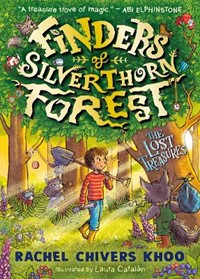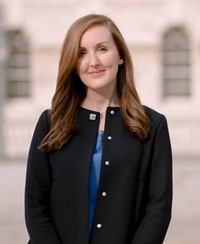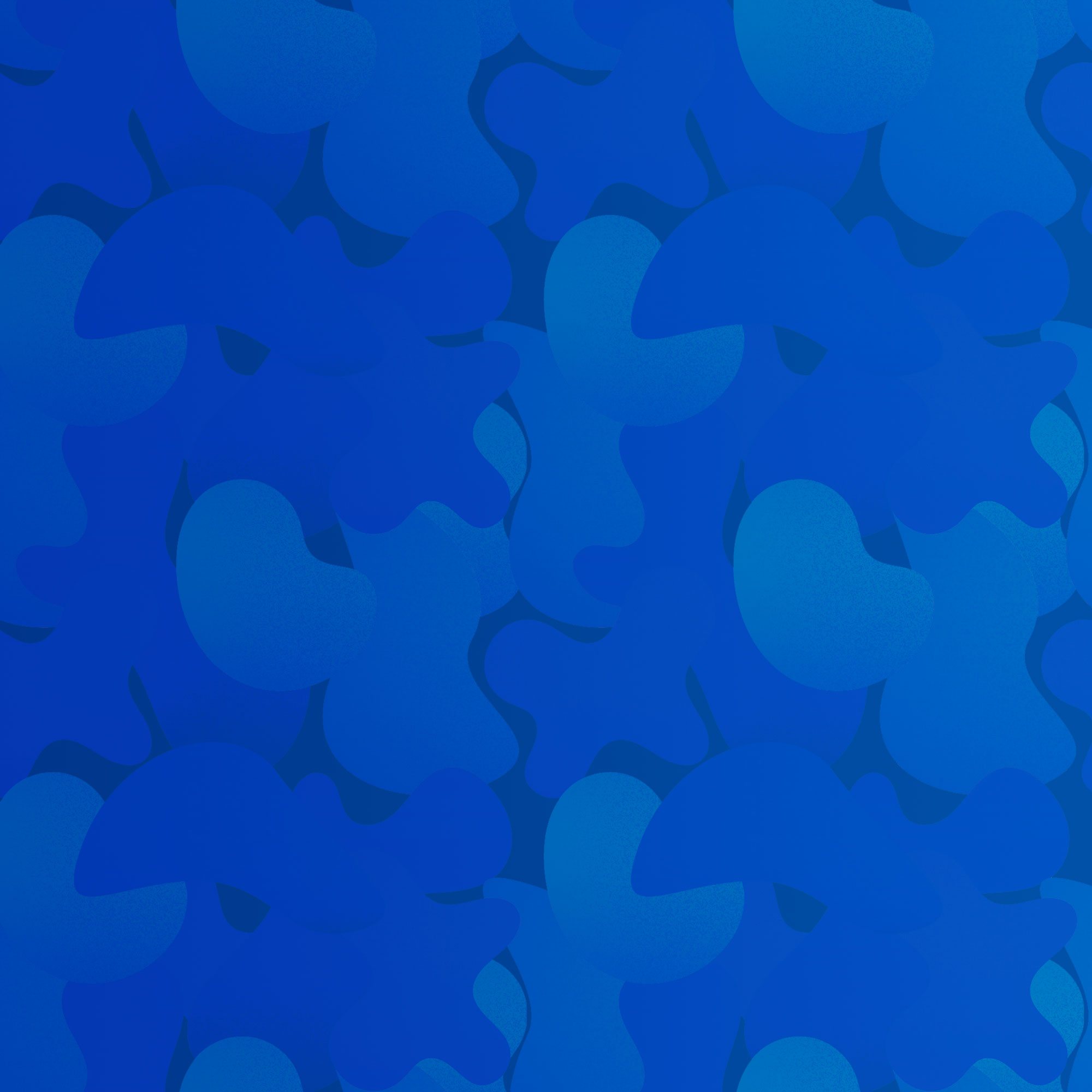Rachel Chivers Khoo


About Author
Rachel Chivers Khoo introduces her magical new series, The Finders of Silverthorn Forest: The Lost Treasure, and tells ReadingZone about the classic books that helped inspire this world.
Rachel and was born in Belfast and spent most of her childhood sheltering in her local library from the endless Northern Irish rain. She studied English literature at Oxford before working in book publishing.
Rachel now lives in Oxford with her husband and two young sons. You can say hello to Rachel online (Twitter: @Rach_Khoo; Instagram: @RachelChiversKhoo).
Interview
May 2025
Magic, nature and hidden secrets in The Finders of Silverthorn Forest: The Lost Treasures (Walker Books)
When Max starts to search for his grandma's lost time capsule, which she buried in her back garden years before, he doesn't realise he's about to embark on an adventure involving hidden forest creatures, lost objects and new friends.
ReadingZone spoke with author Rachel Chivers Khoo to find out more about The Lost Treasures, the first in an exciting new series, The Finders of Silverthorn Forest, for children who love magical worlds, nature and adventure!
Rachel also gave us her top tips for world-building and planning a setting for stories - and tells us what she would include in a time capsule from her own childhood.
Read a chapter from The Finders of Silverthorn Forest: Lost Treasures
Rachel Chivers Khoo introduces her magical eco-adventure, The Lost Treasures!
"The book is dedicated to my eldest son, who taught me that it only takes a little imagination for a beautiful leaf or a sweetie wrapper to become a treasure."
1. Thank you for joining us on ReadingZone! Can you tell us a little about yourself, what makes you laugh, what makes you grumpy, and what brings a little magic into your life?
Hello, and thank you for having me! I was born in Belfast and grew up in Northern Ireland, but now live in Oxford with my husband and two young sons. Writing books with little ones around is a bit of a challenge, but also a lot of fun. My children make me laugh every day, even in the midst of a writing deadline. I often get up early to write and can be quite grumpy until I've had coffee and settled into the story.
I'm happiest outdoors and love walking and cycling around the city. Oxford is so beautiful. It has lots of green spaces and some incredible ancient trees.
2. How did you begin writing for children and what kinds of stories do you enjoy writing?
I've been writing for as long as I can remember and have always been drawn to writing magical stories for children. In many ways, this book reflects some of the books I loved most when I was young: The Magic Faraway Tree, The Borrowers and The Wombles.
3. What happens in Finders of Silverthorn Forest: The Lost Treasures? Are you planning further adventures for Max and the Finders?
Excitingly I've just finished edits for book two. So, I can promise another adventure is on the way!
In the first book of the series, Finders of Silverthorn Forest: The Lost Treasures, a boy named Max sets out to locate a lost time capsule his grandma once buried in the woods as a child. While searching for it Max never expects to discover the home of a small magical creature. Nor does he expect that magical creature to have an extensive collection of lost items, all catalogued and labelled. Yet this is how he meets Tuftorious Snook, collector of lost objects, and just one of the many Finders living in Silverthorn Forest.
Thrilled by his discovery, Max can't wait to find out more about these extraordinary creatures. But when he accidentally breaks the most important rule - never steal - he's banished from their home. With Silverthorn Forest in danger, however, Max must somehow find a way to save Tuft and the other Finders before it's too late.
4. What inspired this story and its world of 'finders' of lost things?
As someone who is always losing things, I've often wondered where on earth my various belongings have gone: lost keys, a missing purse, a mislaid library card. Mysteriously, the lost item will often turn up exactly where I thought it would be - despite that being the first place to have been searched. Or else the item won't turn up at all, which is an even bigger mystery when you think about it.
I've always wondered: where do our lost objects end up? It was that question which sparked the idea for this series.
5. How did you go about building the world of the Finders, and the community's rules about finding - and keeping?
I love world-building and it was really fun to think through how the Finders would organise themselves and what their moral codes would be. I wanted to delve into the question of lost objects, drawing on some of my favourite childhood books: The Borrowers and The Wombles. The wondrous characters from those pages have stayed with me, especially Arrietty Clock, Bungo and Great Uncle Bulgaria.
6. Why did you want this story to have such a strong environmental theme, from 'recycling' found things to the threatened destruction of the woodland?
One of the things I've noticed from spending time with young children, is that they are just as interested in cardboard boxes and interesting sticks as they are in toys. The book is dedicated to my eldest son, who taught me that it only takes a little imagination for a beautiful leaf or a sweetie wrapper to become a treasure. I think we can all learn a lot from that view of the world. Life isn't about accumulating lots of stuff. It's about appreciating and protecting the beauty all around us.
7. There are so many details to enjoy in this story, from the 'Umbrella Tree' to a burrow of lost treasures and the villainous Mr Pellington. What did you most enjoy creating?
I did really enjoy writing the treasure burrow scene and I love Laura Catalán's illustration with all the shelves of treasures. It's an amazing feeling when an illustrator brings something to life from your imagination. I have to admit, it was also quite fun creating the villain, Mr Pellington. And it was even more fun plotting his downfall!
8. How did you imagine what the Finders would look like? What did you think of the illustrations by Laura Catalán of your world?
Laura is so talented. It's been a real joy to get to work with her on the book. She drew a few quite different rough sketches of Finders before we decided exactly how they should look. It was fun seeing the options and deciding how long a Finder's whiskers/ears/tail should be. I also loved seeing all their mismatched outfits come together, and the tiny details and fun little jokes in Laura's illustrations.
9. There's a missing time capsule at the heart of this story, created by Max's gran. What would you put in your own time capsule, and how do you suggest children go about creating their own time capsule?
I have recently created my own time capsule, which I plan to share during school author visits. It's an ode to my 1990's childhood: Disney video tapes, a Polly Pocket toy, a slinky and my favourite ever Steps CD. I also have my first library card and a secret letter I wrote in 2002. If you'd like to make your own time capsule, there's a step-by-step guide at the back of the back of the book. Enjoy!
10. You enjoy writing about the magic that could happen in the spaces between our world and imaginary ones. Are there places that help inspire your stories? Where do you like to visit to help inspire new stories?
I do a lot of writing in the university libraries. If I'm a bit stuck on a story I just take a break and wander the shelves or explore parts of the Bodleian Library I've never been to before. I love the feeling of being surrounded by books. You can never be short of ideas or inspiration in a library.
![]()
Creative Challenge: We love the map on the opening pages of Finders of Silverthorn Forest. How did you create it, and what are your top tips for young writers in creating their own 'map' setting for a story?
My original 'map' was a very untidy sketch, but the illustrator Laura Catalán worked wonders with it! Here are my top tips for planning a setting for your story:
- Firstly, make it personal. Think about your main character and make sure all of the places that really matter to them are marked on the map. This will help you and your readers feel connected to the location.
- Make sure your setting has scope for an adventure or two. Perhaps you could include a secret location, a hidden doorway or a magical portal?
- Finally, don't forget to add a sense of threat. Perhaps a villain's lair or a foreboding presence on the outskirts of the map (like the diggers around Silverthorn Forest)? It's a great way to give your readers a little hint at the obstacles your protagonist will face.

School Events: Can you tell us what schools can expect from a visit from you, what you'll cover, and how schools can get in touch to arrange a visit?
I offer in-person and virtual author visits, aimed at inspiring reading for pleasure and creative writing. My main assembly event is suitable for Year 2 to Year 6, and I have a separate presentation for younger audiences.
Expect magical props, lots of audience interaction and a bindle bag full of lost treasures. I also offer creative writing workshops suitable for classroom settings, as well as follow up activities and lesson plans. You can find testimonials on my website (rachelchiverskhoo.com). Please get in touch via the contact form if you'd like to find out more.
 Finders of Silverthorn Forest: The Lost Treasures
Finders of Silverthorn Forest: The Lost Treasures
 The Magician Next Door
The Magician Next Door
 The Wishkeeper's Apprentice
The Wishkeeper's Apprentice
